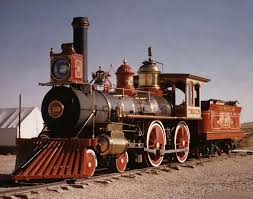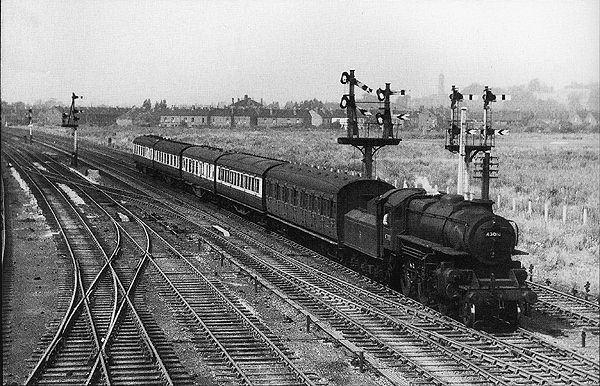Stamp: Steam locomotive, omnibus, paddle-steamer, aircraft (Hungary 1966)
Steam locomotive, omnibus, paddle-steamer, aircraft (Hungary 1966)
02 April (Hungary ) within release Transport Museum, Budapest goes into circulation Stamp Steam locomotive, omnibus, paddle-steamer, aircraft face value 1 Hungarian forint
| Stamp Steam locomotive, omnibus, paddle-steamer, aircraft in catalogues | |
|---|---|
| Michel: | Mi: HU 2220B |
| Philatelia Hungarica Catalog: | PHu: HU 2264V |
Stamp is horizontal format.
Also in the issue Transport Museum, Budapest:
- Stamp - Steam locomotive, omnibus, paddle-steamer, aircraft face value 1;
- Stamp - Tram, omnibus, passenger-ship, aircraft face value 2;
Stamp Steam locomotive, omnibus, paddle-steamer, aircraft it reflects the thematic directions:
An aircraft (pl. aircraft) is a vehicle that is able to fly by gaining support from the air. It counters the force of gravity by using either static lift or the dynamic lift of an airfoil, or, in a few cases, direct downward thrust from its engines. Common examples of aircraft include airplanes, rotorcraft (including helicopters), airships (including blimps), gliders, paramotors, and hot air balloons.Part 1 (Definitions and Abbreviations) of Subchapter A of Chapter I of Title 14 of the U. S. Code of Federal Regulations states that aircraft "means a device that is used or intended to be used for flight in the air."
Aviation is the practical aspect or art of aeronautics, being the design, development, production, operation and use of aircraft, especially heavier than air aircraft. The word aviation was coined by French writer and former naval officer Gabriel La Landelle in 1863, from the verb avier (synonymous flying), itself derived from the Latin word avis ("bird") and the suffix -ation.
A bus (contracted from omnibus, with variants multibus, motorbus, autobus, etc.) is a motor vehicle that carries significantly more passengers than an average car or van, but fewer than the average rail transport. It is most commonly used in public transport, but is also in use for charter purposes, or through private ownership. Although the average bus carries between 30 and 100 passengers, some buses have a capacity of up to 300 passengers. The most common type is the single-deck rigid bus, with double-decker and articulated buses carrying larger loads, and midibuses and minibuses carrying smaller loads. Coaches are used for longer-distance services. Many types of buses, such as city transit buses and inter-city coaches, charge a fare. Other types, such as elementary or secondary school buses or shuttle buses within a post-secondary education campus, are free. In many jurisdictions, bus drivers require a special large vehicle licence above and beyond a regular driving license.
A locomotive is a rail transport vehicle that provides the motive power for a train. If a locomotive is capable of carrying a payload, it is usually rather referred to as a multiple unit, motor coach, railcar or power car; the use of these self-propelled vehicles is increasingly common for passenger trains, but rare for freight trains.
A museum (/mjuːˈziːəm/ mew-ZEE-əm) is an institution dedicated to displaying and/or preserving culturally or scientifically significant objects. Many museums have exhibitions of these objects on public display, and some have private collections that are used by researchers and specialists. Compared to a library, a museum hosts a much wider range of objects and usually focus around a specific theme such as the arts, science, natural history, local history, and other topics. Public museums that host exhibitions and interactive demonstrations are often considered to be tourist attractions, and many museums attract large numbers of visitors from outside their host country, with the most visited museums in the world regularly attracting millions of visitors annually.
Railways - Transportation system made up of metal rails which is designed to allow trains to maneuver on the tracks from one location to the next.
A ship is a large watercraft that travels the world's oceans and other sufficiently deep waterways, carrying passengers or goods, or in support of specialized missions, such as defense, research and fishing. Historically, a "ship" was a sailing vessel with at least three square-rigged masts and a full bowsprit. Ships are generally distinguished from boats, based on size, shape and load capacity.
These clams live buried in the sediment on tidal flats. While they are common in muddy areas, their name "arenaria" means sandy and they prefer a combination of sandy and muddy areas. They are well known as a food item on the coast of New England in the Western Atlantic Ocean; however, the range extends much farther north to Canada and south to the Southern states. They are also found in the Eastern Atlantic Ocean, for example in the UK, as well as in the North Sea's Wadden Sea (where they are the dominant large clam).







